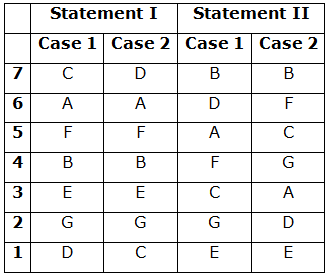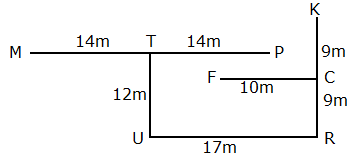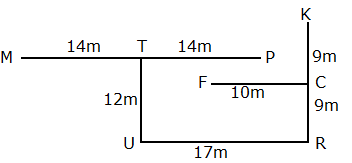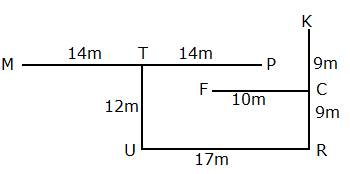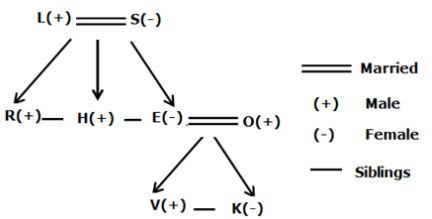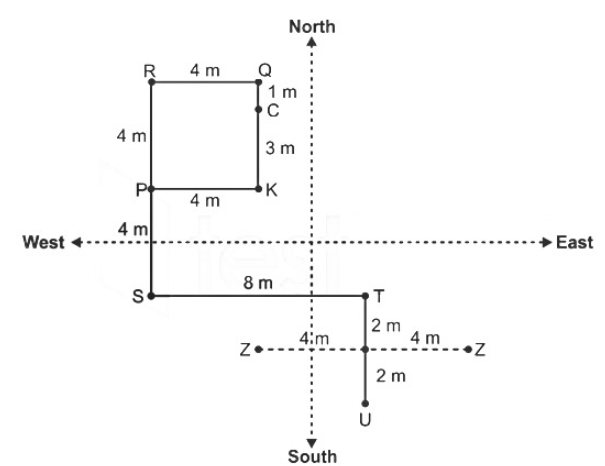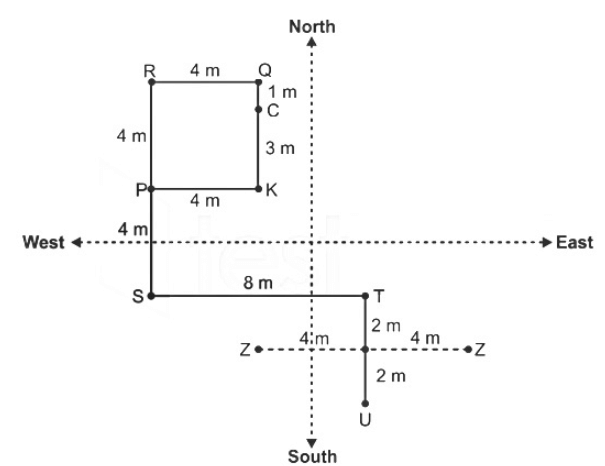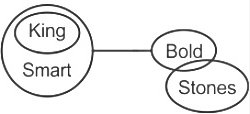IBPS RRB PO (Scale 1) Mains Mock Test - 4 - Bank Exams MCQ
30 Questions MCQ Test - IBPS RRB PO (Scale 1) Mains Mock Test - 4
Read the statement given below and the questions that follow. Considering all the details to be true, mark the suitable option as your answer
Statement: The students these days do not have the habit of reading and that is the reason their knowledge in many areas is not as profound as it used to be earlier as they depend on others to tell them the important information or events.
Course of Action:
I. Schools should promote reading as a habit in students right from their early classes
II. Parents must help the children come closer to reading by making their personal library at home
Read the statement given below and the questions that follow. Considering all the details to be true, mark the suitable option as your answer
Statements:
A. People rush to cancel weddings, demand refunds; wedding industry takes another hit
B. With yellow alert being sounded in Delhi amid rising COVID-19 cases, government allows only 20 guests at marriage events
Each of the questions below consists of a question and two statements numbered I and II given below it. You have to decide whether the data provided in the statements are sufficient to answer the question. Read both the statements and Give an answer.
(A) If the data in statement I alone is sufficient to answer the question, while the data in statement II alone is not sufficient to answer the question.
(B) If the data in statement II alone is sufficient to answer the question, while the data in statement I alone is not sufficient to answer the question.
(C) If the data either in statement I alone or in statement II alone is sufficient to answer the question.
(D) If the data given in both statements I and II together are not sufficient to answer the question.
(E) If the data in both statements I and II together are necessary to answer the question.
Eight persons from P to W are sitting in a linear row facing north. Who sits second to the left of T?
Statement I: R sits fourth to the left of S, who is not sitting at any of the extreme ends. Two persons sit between R and V. As many persons sit to the left of S as to the right of U.
Statement II: T sits third to the right of P. Three persons sit between T and W, who sits at one of the extreme ends. W is sitting adjacent to Q.
Each of the questions below consists of a question and two statements numbered I and II given below it. You have to decide whether the data provided in the statements are sufficient to answer the question. Read both the statements and Give an answer.
(A) If the data in statement I alone is sufficient to answer the question, while the data in statement II alone is not sufficient to answer the question.
(B) If the data in statement II alone is sufficient to answer the question, while the data in statement I alone is not sufficient to answer the question.
(C) If the data either in statement I alone or in statement II alone is sufficient to answer the question.
(D) If the data given in both statements I and II together are not sufficient to answer the question.
(E) If the data in both statements I and II together are necessary to answer the question.
Eight persons from I to P are sitting around a square table in such a way that four persons sit at the corners and the remaining sit in the middle of the sides of the table, all are facing the centre. Who sits immediate right of P?
Statement I: L sits third to the right of K and sits on the corners. One person sits between L and J. P sits second to the right of J. I sits immediate right of N. M is not sitting adjacent to L.
Statement II: N and L face each other. Two persons sit between J and N. M sits third to the right of O, who sits adjacent to L. P sits immediate left of K.
Each of the questions below consists of a question and two statements numbered I and II given below it. You have to decide whether the data provided in the statements are sufficient to answer the question. Read both the statements and Give an answer.
(A) If the data in statement I alone is sufficient to answer the question, while the data in statement II alone is not sufficient to answer the question.
(B) If the data in statement II alone is sufficient to answer the question, while the data in statement I alone is not sufficient to answer the question.
(C) If the data either in statement I alone or in statement II alone is sufficient to answer the question.
(D) If the data given in both statements I and II together are not sufficient to answer the question.
(E) If the data in both statements I and II together are necessary to answer the question.
Seven persons from A to G are living in a 7-storey building numbered 1 to 7 from bottom to top respectively. Who lives immediately above A?
Statement I: E lives three floors below A and immediately above G. The number of persons living below G is one less than the number of persons living above F. As many persons live between C and B as between B and D.
Statement II: Two floors are between D and C, who is living immediately below F. One person lives between F and G, who lives on an even numbered floor. As many persons live above E as below B, who lives above A.
Study the following information carefully and answer the questions given below
If,
A%B (24m) means point B is 26m north of point A
A@B (38m) means point B is 35m south of point A
A#B (4m) means point B is 7m east of point A
A$B (25m) means point B is 23m west of point A
AB?C means C is the mid-point of A and B
P$M (30m); KR?C; T@U (15m); R%K (16m); C$F (12m); MP?T; U#R (14m)
If J@T (5m), then what is the shortest distance and direction of J with respect to M?
Study the following information carefully and answer the questions given below
If,
A%B (24m) means point B is 26m north of point A
A@B (38m) means point B is 35m south of point A
A#B (4m) means point B is 7m east of point A
A$B (25m) means point B is 23m west of point A
AB?C means C is the mid-point of A and B
P$M (30m); KR?C; T@U (15m); R%K (16m); C$F (12m); MP?T; U#R (14m)
Q. What is the distance between M and Q, if P#Q (5m)?
Study the following information carefully and answer the questions given below
If,
A%B (24m) means point B is 26m north of point A
A@B (38m) means point B is 35m south of point A
A#B (4m) means point B is 7m east of point A
A$B (25m) means point B is 23m west of point A
AB?C means C is the mid-point of A and B
P$M (30m); KR?C; T@U (15m); R%K (16m); C$F (12m); MP?T; U#R (14m)
If T@D (6m), then the distance between U and D is the same as between __ and __?
If “1” is added to the odd positioned digits(from left) and “2” is subtracted from the even positioned digits(from left) of each number and all the digits are added within each number. Then which of the following number yield a resultant as a prime number?
If the vowels of the following words are changed to the second preceding letters and consonants are changed with its complementary pair as per English alphabets, and then all the letters in the words are arranged in alphabetical order, then which of the following will be the fifth letters from the right end of the newly formed words?
I) WORKING
II) FRIENDSHIP
III) ABSOLUTE
In the given questions, the relationship between different elements is shown in the statements followed by some conclusions. Find the conclusion which is logically follows.
Statements:
S > R ≥ G < H = E ≤ O; K > D ≤ G > Q > N = P
Conclusions:
In the given questions, the relationship between different elements is shown in the statements followed by some conclusions. Find the conclusion which is logically follows.
Statements:
D > W ≤ G = R < I ≤ T; C = N < J < R ≥ P < K
Conclusions:
Study the following information carefully and answer the below questions
In a family of three-generation has eight members and two married couples. E is the only daughter of L. V is the only son of O. S has three kids. R has only one brother. L is the father-in-law of K’s father. V has only one sibling. H is the brother-in-law of O and vice versa. V is the grandchildren of S. No single parent has a child.
If R is married to A, then how A is related to H?
Study the following information carefully and answer the below questions
In a family of three-generation has eight members and two married couples. E is the only daughter of L. V is the only son of O. S has three kids. R has only one brother. L is the father-in-law of K’s father. V has only one sibling. H is the brother-in-law of O and vice versa. V is the grandchildren of S. No single parent has a child.
How many female members are in the family?
Study the following information carefully and answer the below questions
In a family of three-generation has eight members and two married couples. E is the only daughter of L. V is the only son of O. S has three kids. R has only one brother. L is the father-in-law of K’s father. V has only one sibling. H is the brother-in-law of O and vice versa. V is the grandchildren of S. No single parent has a child.
How R is related to K?
Direction: Two statements are followed by two Conclusions I and II. You have to consider the statements to be true, even if they seem to be at variance from commonly known facts. You are to decide which of the given conclusions can definitely be drawn from the given statements and indicate your answer accordingly.
Statements:
1. The demand for clothes from non-Indian brands is increasing more rapidly than indigenous clothing brands.
2. The above mentioned non-Indian brands are looking for a way to reduce the cost of their products.
Conclusions:
I. The non-Indian clothing brands should manufacture their products in India.
II. A new product from indigenous clothing brands would reduce the current high demand for non-Indian clothing products.
Direction: The question below consists of a question and three statements numbered I, II and III given below it. You have to decide whether the data provided in the statements are sufficient to answer the question.
Q. What is the code for ‘right’ in the coded language?
I. ‘op pq te’ means ‘she is right’ and ‘pq qr sm’ means ‘he is sincere’.
II. ‘nm pu sf’ means ‘they are dancing’ and ‘pt sn pq’ means ‘sky is clear’.
III. ‘op fr pq’ means ‘she is dancing’ and ‘te nm ln’ means ‘they answered right’.
How many such pairs of letters are there in the word “AUTONOMOUS” each of which has as many letters between them in the word (in both forward and backward directions), as they have between them in the English alphabetical series?
Direction: Study the following information carefully and answer the Question based on it:
Input: 962437 794528 465783 213945 753169 236185
Step 1: 734269 825497 647538 129354 961357 321658
Step 2: 162063 243524 21854 22720 54335 6640

Step 5 is the last step of rearrangement. As per the rules followed in the above steps, find out in each of the following questions the appropriate steps for the given input.
Input for the given Question,
Input: 576218 415893 642739 717340 931621 842163.
What is the Addition of 3rd element from left end in step 2 and 3rd element from right end in step 1?
Direction: Study the following information carefully and answer the Question based on it:
Input: 962437 794528 465783 213945 753169 236185
Step 1: 734269 825497 647538 129354 961357 321658
Step 2: 162063 243524 21854 22720 54335 6640

Step 5 is the last step of rearrangement. As per the rules followed in the above steps, find out in each of the following questions the appropriate steps for the given input.
Input for the given Question,
Input: 576218 415893 642739 717340 931621 842163.
What is the product of 4th letter from right end and 4th letter from left end in Step 4?
Direction: Study the given information carefully and answer the following questions below.
The data given are in some coded format, throughout and proceed further
P#Q means P is to North of Q.
P¥Q means P is to South of Q.
P$Q means P is to West of Q.
P&Q means P is to East of Q.
P #@ Q means P is 8m North of Q.
P&µ Q means P is 4m East of Q.
Point K is to 3m South of point C.
P$µK; Q#µK; R$µQ; S¥@R; T&@S; U¥µT
If Z¥&S and Z is 4m away from the midpoint of T and U, then which of the following is possibly correct?
Direction: Study the given information carefully and answer the following questions below.
The data given are in some coded format, throughout and proceed further
P#Q means P is to North of Q.
P¥Q means P is to South of Q.
P$Q means P is to West of Q.
P&Q means P is to East of Q.
P #@ Q means P is 8m North of Q.
P&µ Q means P is 4m East of Q.
Point K is to 3m South of point C.
P$µK; Q#µK; R$µQ; S¥@R; T&@S; U¥µT
If J#&K and point J lies on the line TU and RQ, then which of the following will be true?
Direction: In a certain number system there are only two notations to represent numbers: # and %.
0 is represented by % and 1 by #. The subsequent numbers are represented in the following manner:
2 is represented as #%,
3 is represented as ##,
4 is represented as #%%,
5 is represented as #%# and so on.
Based on this coded language, answer the following questions.
What is the resultant of the following expression?
###%# ÷ #% × ##%% + ##% × #%#
Direction: In a certain number system there are only two notations to represent numbers: # and %.
0 is represented by % and 1 by #. The subsequent numbers are represented in the following manner:
2 is represented as #%,
3 is represented as ##,
4 is represented as #%%,
5 is represented as #%# and so on.
Based on this coded language, answer the following questions.
What will be the square of "##%##"?
Direction: In a certain number system there are only two notations to represent numbers: # and %.
0 is represented by % and 1 by #. The subsequent numbers are represented in the following manner:
2 is represented as #%,
3 is represented as ##,
4 is represented as #%%,
5 is represented as #%# and so on.
Based on this coded language, answer the following questions.
How the resultant for the given expression will be coded?
39 × 5 + 114 × 2 − 125
Direction: Study the following information carefully and answer the Question based on it:
Input: 962437 794528 465783 213945 753169 236185
Step 1: 734269 825497 647538 129354 961357 321658
Step 2: 162063 243524 21854 22720 54335 6640

Step 5 is the last step of rearrangement. As per the rules followed in the above steps, find out in each of the following questions the appropriate steps for the given input.
Input for the given Question,
Input: 576218 415893 642739 717340 931621 842163.
What is the difference between 2nd letter from right end in Step 5 and 2nd letter from left end in step 3?
Direction: Study the following information carefully and answer the Question based on it:
Input: 962437 794528 465783 213945 753169 236185
Step 1: 734269 825497 647538 129354 961357 321658
Step 2: 162063 243524 21854 22720 54335 6640

Step 5 is the last step of rearrangement. As per the rules followed in the above steps, find out in each of the following questions the appropriate steps for the given input.
Input for the given Question,
Input: 576218 415893 642739 717340 931621 842163.
What is the resultant if 3rd letter from right end in Step 4 is divided by 3rd letter from left end in Step 3?
Direction: In the following question, three statements are given followed by four conclusions I, II, III and IV. You have to consider the given statements to be true even, if they seem to be at variance with commonly known facts. Read all the conclusions and decide which of the following logically follows from the given statements disregarding the commonly known facts.
Statement:
All king are smart.
No smart is bold.
Some bold are stones.
Conclusions:
I. No king are bold.
II. Some stones are not smart.
III. Some stones are bold.
IV. All bold being king is a possibility.
Direction: In the following question, three statements are given followed by four conclusions I, II, III and IV. You have to consider the given statements to be true even, if they seem to be at variance with commonly known facts. Read all the conclusions and decide which of the following logically follows from the given statements disregarding the commonly known facts.
Statement
Only a few Table are empty.
Only a few empty are pocket.
All pocket are imports.
Conclusion
I. All Table being empty is a possibility
II. No imports is a table
III. All Empty cannot be Pocket
IV. No Pocket is Table
Direction: In the following question, three statements are given followed by four conclusions I, II, III and IV. You have to consider the given statements to be true even, if they seem to be at variance with commonly known facts. Read all the conclusions and decide which of the following logically follows from the given statements disregarding the commonly known facts.
Statements:
Only a few Tiger are Cat.
No Cat is Mouse.
All Mouse are Parrot.
Conclusions:
I. All Tiger are Cat is a possibility.
II. Some Parrot can never be Cat.
III. Some Tiger are not Cat.
IV. All Parrot can be Tiger.





